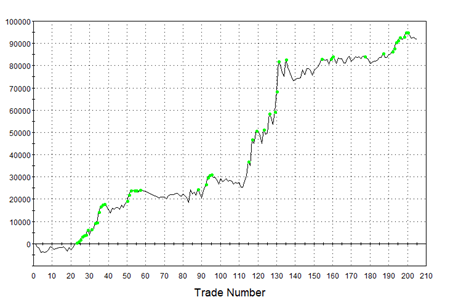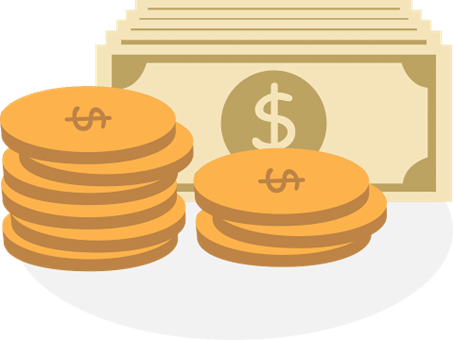Source: Milan Cutkovic
Losses are an inevitable part of trading. With experience, traders will learn how to accept them and actually gather useful lessons from them.
Key points:
- Traders don’t need to put all their focus into their win/loss ratio, as you can loss more trades then you win and still be a successful trader
- Always treat losses as a learning experience
- There are a number of ways you can use trading losses to improve your trading like implementing stop loss orders, analysing each loss and using a trading journal
When traders learn how to handle losses in trading, they can begin to develop a better approach to developing and executing strategies. It’s not unusual for both new and experienced traders to make mistakes in trading but not using those losses to adapt and reposition yourself in the markets is a missed opportunity.
In this article, we will discuss how to deal with trading losses and how those negative results could actually help you improve if you deal with them in the right way.
What is the win/loss ratio in trading?
Let us first start with the win/loss ratio. This is the number of winning trades divided by losing trades. For example, a trader who has 80 profitable trades out of 100, would have a win/loss ratio of 80%.
However, it would be wrong to purely focus on that number and achieve a high ratio. For example, a long-term trader might have a win/loss ratio of only 30%, but because they make significantly more profits on the winning trades than what is being lost on the unsuccessful trades, they still end up being a successful trader.
With scalpers, it is different. As they are chasing small movements in the markets, the risk/reward ratio is lower, and there is not much potential for realising a huge profit in a single trade. Nevertheless, even scalpers don’t need a perfect win/loss ratio to be profitable.
Traders should accept losses as part of the business, and instead of trying to fight them, they should try to learn from those events.
Whether a trader is completely new to trading or in the markets for years or decades, they will have negative trades and positive ones.
How to use losses to improve your trading
Like other things in life, traders can always treat losses as a learning experience. The key is to accept that losses are part of trading.
It is not easy to accept and it may take time, but the sooner you realise losses are inevitable in trading and come up with a positive way of learning from them, the better off you’ll be.
Consider your strategy and your position size before jumping back in. When you do decide you are ready, start small. Getting back into the winning ways even with small position sizes is a good way to build confidence and realign your focus.
Mark D. Cook, one of the best technical traders in the world, once said:
“The true winner is the one who perseveres. The race is a marathon and not a sprint. Recognition that all humans fall short of perfect is the first step to the trek to knowing yourself and knowing your limitations.”
On a practical level, there are some ways you can turn trading losses into jump-off points to improve your trading. Let’s have a look at some!
8 Ways you can use trading losses to improve your trading
1. Accept responsibility
Don’t hide from the loss or blame someone else or the markets for the position you put yourself in.You are the only one who controls your trading, take ownership and make changes in your risk management, trading strategies and goals to better yourself the next time around.
2. Review your position sizing
This may sound basic, but for many traders, position sizing remains a challenge. Many traders tend to take too big a risk per trade, jeopardising their trading capital.
Having a solid position sizing strategy (allocating only a small percentage of your trading capital per trade) may help limit the risk per trade and therefore the overall market risk.
3. Analyse each loss
Though it will not be a pleasant exercise to do, all successful traders would say that an honest and brutal analysis of each loss is what helped them recover and turn their trading for the better.
4. Use a stop-loss level
Do you have a stop loss level for each trade you take? For some traders, using a hard stop loss level works wonders. You can use a dollar value or percentage value to set a stop loss level for each trade.
Using a stop loss level – the point where you will get out of a losing trade may be helpful as it can prevent you from being emotionally attached to a trade.
Most trading platforms now have stop-loss orders and settings you can use as you enter a trade. Remember the saying ‘let your winners run and cut your losses short’? Using a stop loss level (stop-loss order) can help you put this into practice.
In a previous article, we discussed the dangers of not having a money management plan when trading. You may want to refer to it for additional money management strategies and insights.
5. Review your exit strategy
Do you have an exit strategy in place? Do you tend to hold on to losing trades? How soon do you cut your losses?
As many successful traders would attest, most of the time it is your exit strategy that can make the difference between a winning and losing trade.
6. Control your emotions
Fear and greed are the two most potent emotions that can work against traders. Your fear of taking a loss or the greed to go for more may work against you. Make sure you control your emotions and use the tools available on your trading platforms such as stop-loss and take profit orders to make objective trading decisions.
Make yourself aware of revenge trading and ensure you know the effective ways to fight it.
7. Use a trading journal
Most successful traders use a trading journal to record their trades. Whether it is a losing or winning trade, your trading journal may include the entry and exit levels, the win or loss for the trade, some notes about your mindset and emotions during and after the trade.
8. Ask yourself some simple questions
As traders analyse losing trades and try to find ways to turn losses into positives for their trading journey, here are some questions they should be asking themselves:
- How much risk (dollar value or percentage of your capital) did I risk on this trade?
- Did I get in too early (did I force the trade)?
- Did I get out too late (did I not cut the loss early enough?)
- Was I chasing the trade after missing the initial signal?
- What market signal did I ignore or did not see that affected this trade?
- What do I need to change to avoid this situation again?
Bear in mind that losses are part of trading (and life in general), and you can turn them into something positive and useful for your trading.
Turning loss into success
Mark D. Cook, one of the most successful traders featured in the Jack Schwager book Market Wizards, told of the pain and shame he felt when he had to face his mother to tell her that he lost the money he borrowed from her.
The big loss happened during Cook’s early trading career. It forced him to analyse his trading strategy and system. It took him some time to recover from the loss, but it also served as a positive turning point for his successful trading career.
In one of the interviews during his international trading tours, Cook said: “Trading losses will occur with every trader. The key is to manage those losses and not let ego get in the way of sound decision-making.”
“The true path to success always must journey through failure. All the million-dollar traders I know had severe losses. And only when they coped with the losses did they achieve true success.”
While it may be a consolation to know that even professional traders have their share of losing trades, you don’t need to be a Mark D. Cook to realise what needs to be done to turn losses into something positive for your trading.






















